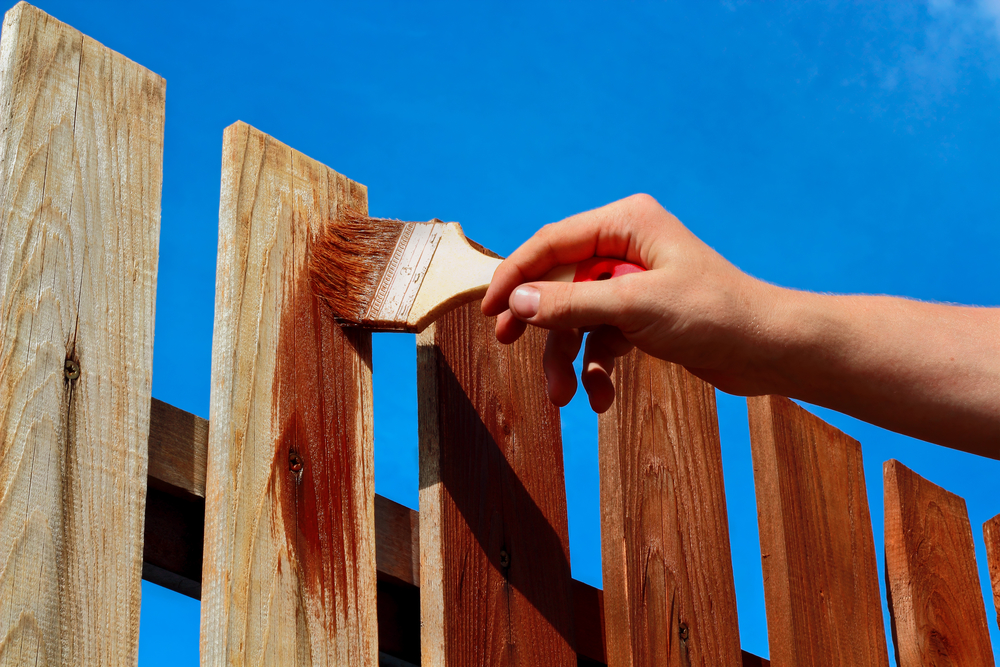If you’re the owner of a wood fence on your property, or if you plan to be in the near future, one of the most common questions you may have about your fence is this whether you should paint or stain it. Useful for both aesthetic and maintenance reasons, painting or staining are related-but-different processes that will come with a few separate benefits depending on your needs and desires.
At Utah Fence Warehouse, we offer a wide variety of wood fence options and installation services at your convenience. We’ll also help advise you on whether painting or staining is the appropriate step given your needs for the fence and your desires regarding the way it looks. Here’s a primer on each area, plus on the option of choosing neither and proceeding with a natural wood look.

Painting
For those primarily looking for an improved aesthetic, particularly those who want to match their fence’s color with the home or some other nearby element, painting is often the way to go. Paint can be found in virtually any color scheme you desire.
At the same time, it’s important to note that painting is a detailed job that needs to be redone regularly. You should expect to repaint every one to three years as paint cracks and peels, and each repainting job involves scraping off the old paint, prepping the surface and then painting the entire thing again. Not only is this a lot of work, it may cost you money. There are alternatives here as well, such as vinyl fences that do not require painting or staining at all – or you might consider colored stains.
Staining
While staining may come at a slightly higher initial cost than painting, this is well worth it in most cases for all the benefits it provides. For one, staining requires far less maintenance – it does need to be redone over time, but nowhere near as frequently as paint. It doesn’t peel or crack, and even re-staining is far easier than repainting due to limited prep needed.
In addition, you can still maintain a great aesthetic using stain. You can use a solid stain, such as for a white picket fence, or there are plenty of semi-transparent options if you prefer the natural look and just want to protect your fence from the elements and help it last longer.
Leaving it Natural
Finally, you always have the option of leaving your fence entirely natural, with no painting or staining whatsoever. This is the lowest-cost option, and while it may cause the fence to wear down a bit faster than if you paint or stain it, some people actually prefer the weathered look for their wood fence. If you use quality wood, meanwhile, you will still get a solid lifespan out of the fence, which can be increased by pressure-washing it regularly.
For more on your finishing options for a wood fence, or to learn about any of our fence repair or installation services, speak to the staff at Utah Fence Warehouse today.

